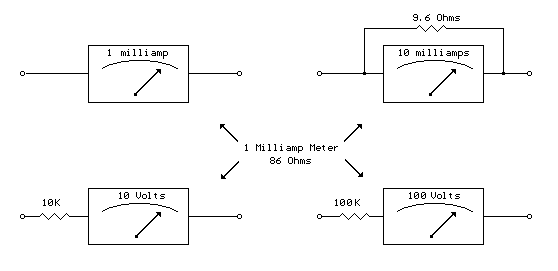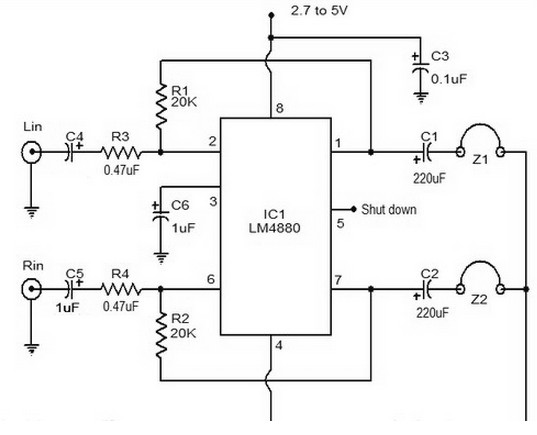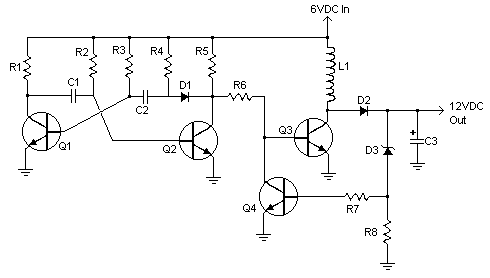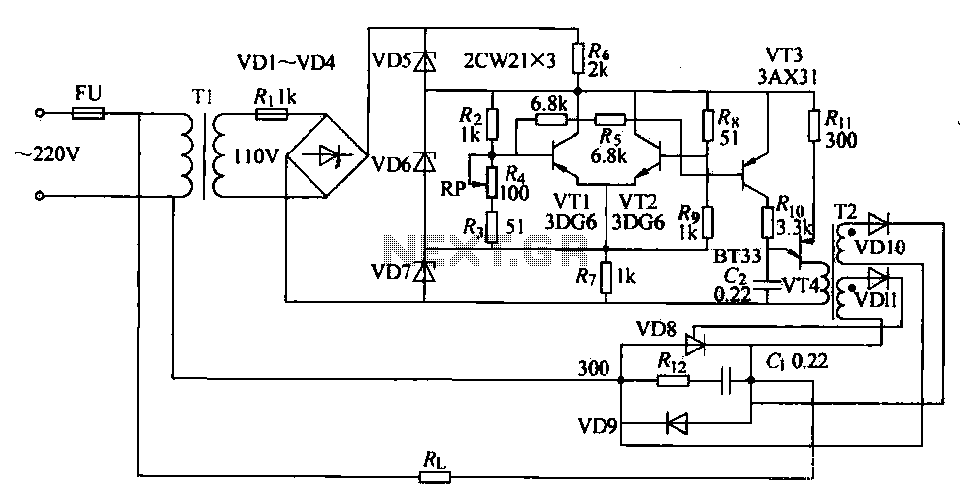
MAX8903A charger circuit diagram
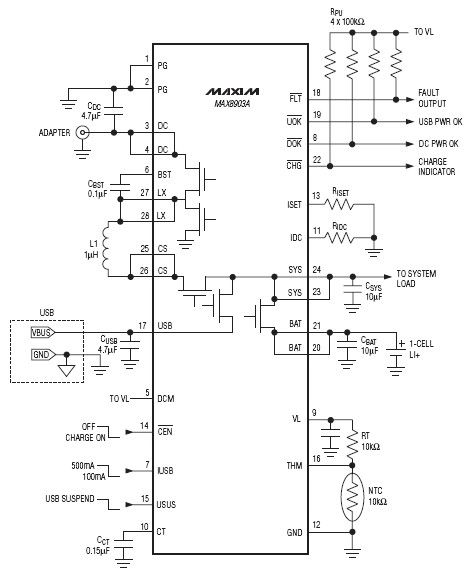
The DC input for this charger IC operates from 4.15V to 16V with a maximum protection limit of 20V. In contrast, the USB input has a voltage range of 4.1V to 6.3V, with protection up to 8V.
The charger integrated circuit (IC) is designed to efficiently manage power input from two sources: a DC input and a USB input. The DC input is capable of handling voltages between 4.15V and 16V, making it suitable for various applications where a stable and higher voltage is required. The inclusion of a protection feature that allows for a maximum input voltage of 20V ensures that the circuit remains safe from overvoltage conditions, which could potentially damage the IC or connected components.
On the other hand, the USB input is optimized for lower voltage applications, operating within a range of 4.1V to 6.3V. This range is typical for USB-powered devices, allowing for compatibility with standard USB power supplies. The protection limit of 8V serves as a safeguard, preventing damage from voltage spikes or surges that may occur during operation.
Incorporating both input options allows for versatility in design, making this charger IC suitable for a wide range of electronic devices. The ability to switch between DC and USB power sources enhances the usability of the device, providing flexibility in power management.
Additional design considerations may include the implementation of filtering capacitors at the input to smooth out voltage fluctuations, as well as thermal management solutions to dissipate heat generated during operation. Proper layout techniques, including trace width calculations and grounding strategies, will also contribute to the overall performance and reliability of the circuit.The DC input for this charger ic operates from 4. 15V to 16V with up to 20V protection, while the USB input has a range of 4. 1V to 6. 3V with up to 8V protection. 🔗 External reference
The charger integrated circuit (IC) is designed to efficiently manage power input from two sources: a DC input and a USB input. The DC input is capable of handling voltages between 4.15V and 16V, making it suitable for various applications where a stable and higher voltage is required. The inclusion of a protection feature that allows for a maximum input voltage of 20V ensures that the circuit remains safe from overvoltage conditions, which could potentially damage the IC or connected components.
On the other hand, the USB input is optimized for lower voltage applications, operating within a range of 4.1V to 6.3V. This range is typical for USB-powered devices, allowing for compatibility with standard USB power supplies. The protection limit of 8V serves as a safeguard, preventing damage from voltage spikes or surges that may occur during operation.
Incorporating both input options allows for versatility in design, making this charger IC suitable for a wide range of electronic devices. The ability to switch between DC and USB power sources enhances the usability of the device, providing flexibility in power management.
Additional design considerations may include the implementation of filtering capacitors at the input to smooth out voltage fluctuations, as well as thermal management solutions to dissipate heat generated during operation. Proper layout techniques, including trace width calculations and grounding strategies, will also contribute to the overall performance and reliability of the circuit.The DC input for this charger ic operates from 4. 15V to 16V with up to 20V protection, while the USB input has a range of 4. 1V to 6. 3V with up to 8V protection. 🔗 External reference
